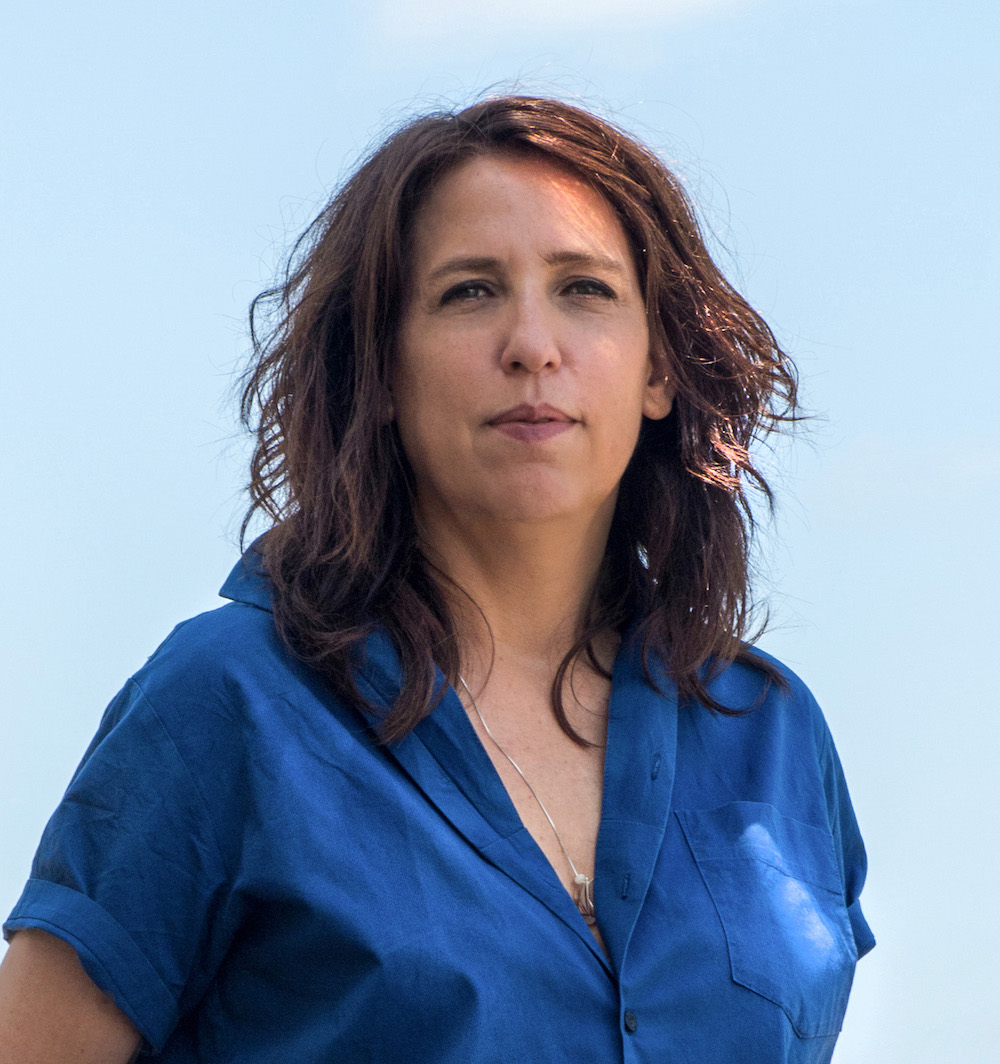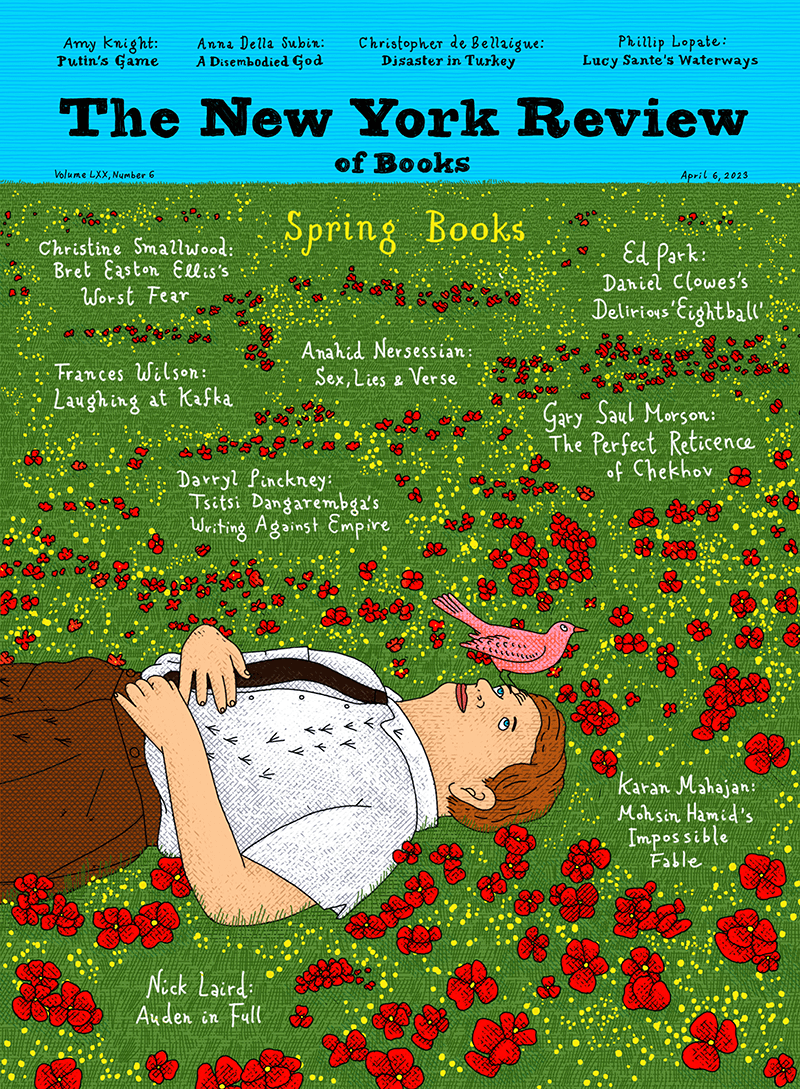This article is part of a regular series of conversations with the Review’s contributors; read past ones here and sign up for our e-mail newsletter to get them delivered to your inbox each week.
Rutu Modan, who designed and drew our blossoming Spring Books cover, is an Israeli graphic novelist and artist who lives in Tel Aviv with her family. I first met her at the 2013 Edinburgh International Book Festival, where we were both on a panel to discuss our graphic novels. I loved hers, The Property, which is about history and belonging and belongings. Her stories, shot through with dark drama and weird fantasy, give a sense of life in Israel: political violence alongside love, vaudeville, and the daily frustrations and humiliations of family life.
In 1995 Modan and the illustrator Yirmi Pinkus cofounded Actus Tragicus, an alternative comic artists’ collective and independent publishing house, and the two later founded Noah’s Books, dedicated to creating comics for very young children based on classics of modern Hebrew literature. In 1996 she collaborated with the Israeli author Etgar Keret on her first graphic novel, Nobody Said It Was Going to Be Fun. Her comics have since been serialized in The New York Times and The New York Times Magazine. Her most recent graphic novel, Tunnels, about archaeology, ethics, and land, came out in 2021.
I e-mailed with Modan while demonstrations and protests were underway around her in Tel Aviv over the current government’s plan to overhaul the country’s judiciary.
Leanne Shapton: Are you involved in the protests happening right now?
Rutu Modan: I go every week to the main demonstration in Tel Aviv, and if anything crucial happens in between (it usually does), I go to that, too. There are also endless petitions to sign, WhatsApp groups to join, Facebook posts to read. (My new bad habit is arguing with supporters of the judicial reform plan online. Useless and hardly satisfactory.) It’s the only subject people are discussing. It’s so time-consuming! Leave me alone and let me draw in peace in my studio!
Joking aside, I’ve been going to the left’s demonstrations here for more than forty years, and I can say with certainty that there has never been something close to what is happening now. It’s encouraging and gives me some hope, but there is always the fear that we won’t succeed in getting our demands met.
I believe the current situation has brought to the surface some of Israel’s deepest conflicts, conflicts that have been here from the day the nation was established and that were suppressed in order to maintain a kind of stability: the contradiction between a democratic and a Jewish state, between religion and progress, Ashkenazi and Sephardic people, socialism and capitalism, and then hovering above all the other problems is the occupation, which seems almost to have been forgotten in the current debate.
It was bound to explode one day. Maybe that day is here. Despite all the difficulty, I confess that I’m glad it happened in my lifetime. I’m quite curious what will come out of it.
Your stories get very deep about daily life. I love when they veer into fable or magical realism—but always a hair’s breadth away from violence, suicide bombings, and nervous breakdowns. Is this your subject?
My stories represent my point of view. The banal, the magical, violence, love, they are all part of reality, not just as separate experiences but often different aspects of the same thing. My stories evolve around questions that are bothering me. I don’t even try to solve them, it’s impossible. I just try to organize the details to make some sense of the mess.
What did you grow up looking at?
At people, most of all. I was and still am a devoted voyeur and eavesdropper. These habits—or even hobbies—are an endless source of story ideas, dialogue, drawing material.
As for more specific artistic influences, I would maybe mention my mother’s collection of paperbacks by American cartoonists from the 1940s–1960s. She was a scientist, not an artist, but she bought piles of these books when my parents did fellowships at Johns Hopkins. As a child I read them until the pages crumbled. Since I didn’t read English I couldn’t understand the jokes, so I read the drawings.
Your stories remind me of Alice Munro, Julio Cortázar, sometimes even Lydia Davis. Who are some of your favorite writers?
I love the Russians, the classics from Chekhov and Dostoevsky to Nabokov and Daniil Kharms, and more contemporary ones like Vladimir Sorokin and Lyudmila Petrushevskaya, just to name a few. I identify with their sense of perpetual disaster and desperate humor. Their stories are bigger than life, as I think art should be. Our sense of our lives is often that they’re bigger than they are. The English novelists, like Dickens and Austen, I love for their dry humor and sensibility. The Italian Natalia Ginzburg I love for her humanity, her deep compassion for the most stupid and clueless characters. John Barth and Roberto Bolaño also come to mind. Actually, it’s difficult to make this list, there are so many great writers who I owe so much.
Advertisement
How did your drawing style develop, and did it ever change drastically?
In the 1990s my drawing style was much more grotesque and distorted, and so were the stories. Over the years, my drafting skills have improved, but it wasn’t just that. The stories changed. They became subtler and more realistic; softer maybe, less judgmental. I believe this development of my writing (and of myself) also influenced my drawing style.
Can you tell me more about Actus Tragicus, which you founded right after Yitzhak Rabin’s assassination, and how it functions today?
Actus was active between 1995 and 2010. After that, we each went in different directions, and these days I’m the only one who still identifies as a comics artist. The fifteen years that we worked together were amazing, though. I learned so much from my friends. Establishing the group was definitely the best idea I had for my career (although I don’t like that word) and artistic development.
What do you collect, if anything?
In general I’m not so interested in “stuff” except books and clothes (and over the years, less and less of the latter). But I don’t “collect” them, I use them. Even if I like a book, I wouldn’t necessarily keep it if I didn’t think I would ever read it again.
What is coming next with Noah’s Books?
All the titles that Noah’s Books has published were comic adaptations of classical Israeli writers’ forgotten work. Our new goal is original work, written especially for our imprint. Unfortunately, both Yirmi and I just don’t have the time to make it happen. He is writing his fifth novel, and I am involved in too many projects already. I’m sure (I hope!) we’ll get back to it next year.



